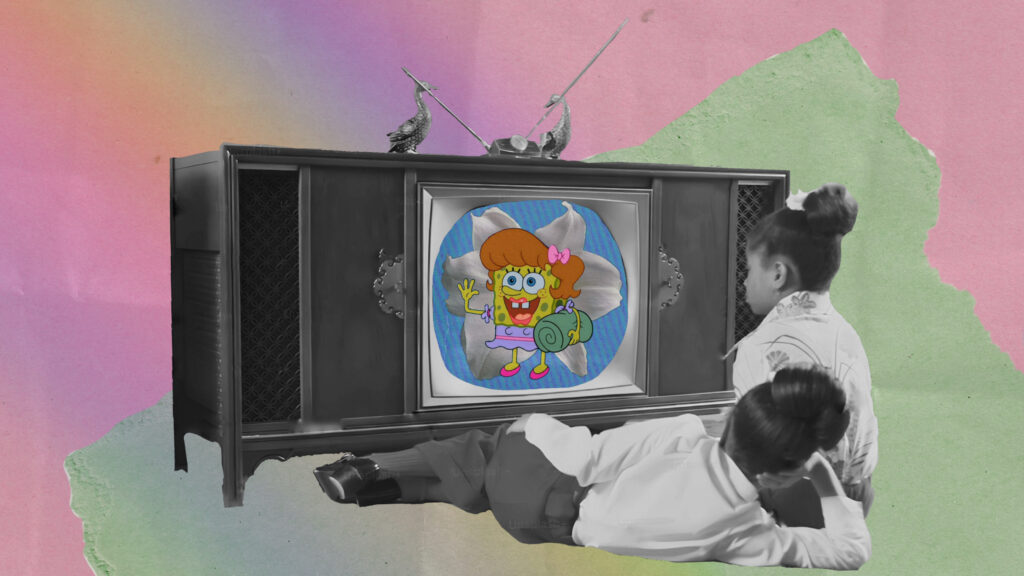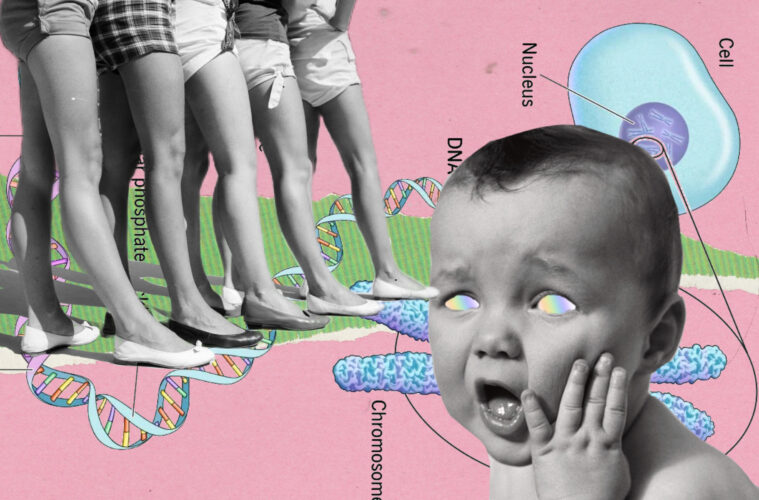Words by: Madame Miel
Artworks by: Lina A
This article is a supplement within “The Wawa Complex” issue
In our region and all over the world, people try to find all sorts of ideas about “what makes you gay.” Are people “born this way” or is it a choice or reaction to trauma? Most people who try to explain or find a reason “why” are working with the assumption that people were born straight, the “natural” way, and that something must have catalyzed this “irregularity.” It’s as if finding a cause/reason why someone becomes gay would help people find a solution to fix this “problem,” or to nip it in the bud.
But we know that LGBTQI identities exist on a spectrum, and that LGBTQI people exist in all corners of the world and are from diverse ethnic backgrounds, socio-economic statuses, etc. And, we know that same-sex intimacy is not a new or a Western phenomena; while the labels like “gay” and “trans” may be imported, there are diverse vocabularies and ways of describing same-sex acts and desires all over the world.
Many of these “culture-based” myths persist, despite homosexuality no longer having the status of a “mental health disorder.” Below, I’ll address a number of common myths about “what makes people gay,” many of which focus on childhood and upbringing – the cultural consensus of when queerness “starts.” When trying to prevent kids (and perhaps especially boys) from “being gay,” the question often turns to: Does family structure or media influence a child’s sexual orientation? Is it related to science or some traumatic event?
In deconstructing these myths about the nuance and root of the stigma, we may move toward delegitimizing them and the ways they harm LGBTQ+ individuals.
Myth #1: Boys will grow up to be gay if they grow up in a female-centered environment (multiple aunts, sisters, etc.).
Some fear that males who are raised by single mothers, mothers without a male counterpart, or surrounded by many women (aunts or sisters) will grow up to be feminine, a “mama’s boys,” wimps, or worst of all, gay. This cultural myth persists despite a number of case studies that show this argument of causation is faulty.
This myth persists despite observing many males who grew up in homes with a “traditional” family structure (ie. heterosexual with hands-on parenting from fathers) becoming gay. There was also a 1989 study that showed that sons of lesbian mothers are not more likely to develop non-heterosexual tendencies. The study found that some daughters report more non-heterosexual identities, but this could be because children of lesbians may have “more expansive perspectives on sexuality” and daughters may feel safer to experience the fluidity of same sex attraction. Alternatively, a 1995 study found that 90% of adult sons of gay fathers identified as heterosexual.
Research psychologist, Peggy Drexler, examines parenting in female-centered households in her book, Raising Boys Without Men (2005). While the text is based on research in the Western case studies, her finding that effective parenting is not anchored in gender but in other factors of goodness or deficiency seems broadly applicable. In fact, she found that boys who are raised by women grow up to be stronger emotionally, more empathetic, and more independent than boys raised in heterosexual two-parent houses.
Myth #2: Being exposed to LGBTQ content will make kids queer.
Kids are impressionable, and it is undeniable that people are influenced by their environment. But while media is highly influential for children, it does not have the power to “convert” their sexuality.
This is easily refutable if you think about children who grew up in the 80s and 90s, who read about and watched thousands of straight characters, and who still grew up to be gay. There was no representation, or it was very limited or covert. Nowadays, parents become concerned that one gay character on a children’s show might make their daughter wake up and ask a girl to prom. But the only thing that has changed is that some media and entertainment networks are taking strides to actively be more inclusive, promote tolerance and acceptance, and minimize prejudices toward marginalized groups. These networks are not driven by the “gay agenda,” but by the popularity of the content and demand.
The media may be linked to the increase in people who are openly queer, but again, this is not causation. More gay characters in books and shows lead to more representations, which teaches people that there are multiple ways to be. Seeing and identifying with characters that look or have similar experiences to them may help them develop a stronger sense of identity or belonging. While these characters and storylines can be problematic, like if they promote stereotypes, the presence of queer characters can create environments that are less dangerous or lonely, or misunderstanding for individuals and societies. It gives more space so that when people realize their sexuality today or “come out,” they may see that they are part of something greater.

Artwork by: Lina A
Myth #3: So if it’s not nurture that makes kids gay, it should be explainable by science, as some kind of “sickness” or anomaly.
In a 2019 issue of Science Magazine, geneticist Andrea Ganna at the Broad Institute of MIT and Harvard, and colleagues, described the largest survey to date for genes associated with same-sex behavior. By analyzing the DNA of nearly half a million people from the U.S. and the U.K., they concluded that genes account for between 8% and 25% of same-sex behavior. While there was no evidence of a single “gay gene,” there was overwhelming evidence of a biological basis for sexual orientation that is programmed into the brain before birth based on a mix of genetics and prenatal conditions, none of which the fetus chooses. So if same-sex attraction can be influenced by genetics, this might make people more accepting of the idea that same-sex sexual behavior is simply a natural part of our diversity as a species and not something deviant.
The American Psychiatric Association and Diagnostic and Statistical Manual of Mental Disorder (DSM) – which has the same roots as colonial psychology and medicine – stopped classifying homosexual as a medical illness in the 1970s, replacing them with treatment guidelines for people who are distressed by their homosexuality.
While it is true that LGBTQ people tend to suffer higher rates of anxiety, depression, suicide, drug abuse, etc. than the general population, this is not because they are “by nature” deeply troubled people. These rates are higher in the LGBTQ community because of the historical social stigmatization of homosexuality and violence directed at them. Let’s face it, the whole “mental health awareness” boom that is currently all over social media wasn’t something that was talked about before. People in general tend to have terrible coping mechanisms when it comes to dealing with daily stressors. Now just imagine the internalized shame, guilt, violence, and hate directed at gay people on a daily basis.
Myth #4: Traumatic experiences like childhood sexual assault caused same-sex attraction.
This myth is perhaps the most dangerous, as it minimizes the fact that sexual assault is a complicated encounter for the victim to process. Victims’ bodies can respond to the aggression with signs of arousal, such as an erection, wetness, or orgasm. Some people think they must have enjoyed the encounter – why would their body react this way, otherwise? Maybe because of these assumptions or the way that we process trauma, it’s not uncommon for victims to reflect on and have to process their sexual identity or their relation to the gender of the attacker after this encounter.
But the feeling of arousal or the reflection and evaluation that may happen after is not that simple. Our bodies respond to sexual stimuli regardless of the situation or context, even if they are repulsed or feel unsafe, or are actively resisting. This is called “arousal non-concordance,” when there is a disconnect between the mental-emotional experience of pleasure and the body’s reaction to sexual stimuli. In the context of sexual assault, many survivors can experience involuntary arousal. Note that regardless, the bodily response does not replace consent.
The assumption that people are “straight until assaulted” is as simplistic as it is offensive, and it ignores the fact that sexuality exists on a spectrum; it’s fluid. This idea is also rooted in an argument of causation rather than correlation. There may be a correlation between queerness and people who have experienced sexual assault in childhood because there is higher mistreatment of LGBTQ people, in general, making them more isolated and vulnerable. Being kicked out of a family’s home due to one’s sexuality, something that is relatively common, puts that person at greater risk. This vulnerability also might lead kids toward situations where they seek affection from adults they come to trust, particularly when there is a lack of parental affection, whether that’s through manipulation, attention, affection, or gifts.
Rather than focusing on sexual orientation before or after the trauma, it would be more constructive for those concerned to focus on the well-being of the victim and the nature of the context in which this happened, because these cultural myths can become serious obstacles to understanding and healing.
Some other myths of “honorable mention,” which seem to have no real legitimate basis:
- “Queer people are queer because they just haven’t met someone of the opposite gender that they like “
- “More gay people exist now because it’s trendy or for shock value.”
- “Same-sex marriage is a slippery slope which will lead to people marrying their dogs.”

